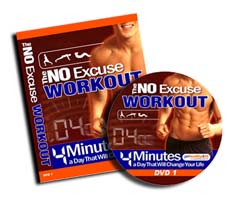 When you’re young your muscles continue to grow bigger and stronger, even if you put in very little effort. But by the time you reach 40, and by some estimates perhaps by the age of 30, your muscles will start to gradually lose tone and function.
When you’re young your muscles continue to grow bigger and stronger, even if you put in very little effort. But by the time you reach 40, and by some estimates perhaps by the age of 30, your muscles will start to gradually lose tone and function.
This process, known as sarcopenia (muscle loss with aging), can eat away up to 5 percent of your muscle mass with each passing decade. By the age of 75, sarcopenia typically accelerates to the point where you may feel weaker or be unable to engage in physical activities you once enjoyed.
What may surprise you, however, is that muscle loss isn’t only a matter of strength. When you have muscle loss it can contribute to excess wrinkling, making you look older. It also increases your risk of metabolic conditions like type 2 diabetes, because muscle tissue plays an integral role in regulating your blood sugar and other hormones.
Muscle loss is worse among people who are inactive. However, even those who stay active experience some level of loss of muscle tone, and this is likely because physical activity is not the only factor involved. For instance, the following factors have also been linked to reduced muscle mass with age: [i]
- A decrease in concentrations of certain hormones, including human growth hormone, testosterone and insulin-like growth
- Inadequate intake of calories and protein to sustain muscle mass
- Decreased ability to synthesize protein
As with most conditions, you don’t simply wake up one day and find you’ve lost your muscle tone. It’s a gradual process that is best stopped before it’s even begun (but don’t worry … even if you’re in your 50s, 60s, 70s or beyond, you can still make significant improvements). As Douglas Paddon-Jones, Ph.D., professor of nutrition and metabolism at the University of Texas Medical Branch at Galveston told MSN:[ii]
“Sarcopenia tends to be a slow and insidious process–it’s not something that just happens when you reach old age … The parallel we often draw is with osteoporosis. It’s subtle at first and becomes far more consequential when it has progressed. That’s why it’s so important to maintain as much lean muscle mass as you can, from your thirties and forties onward. But even if you start later in life you can make a big difference.”
How to Prevent Age-Related Muscle Loss
7. Get Sensible Sunlight Exposure
This will ensure you have adequate levels of vitamin D. This vitamin acts like a hormone in your body and while it’s most widely known for its role in bone health, it’s essential for muscle health, too, including muscle protein synthesis. Muscle weakness is commonly seen along with vitamin D deficiency.[iii]
6. Eat Omega-3 Fats
Omega-3 fats may improve the way your muscles use protein, helping to counteract sarcopenia.[iv] They also fight inflammation, which will accelerate muscle break down if left unchecked.
5. Eat Enough Protein
Protein is the building blocks of your muscle, so it’s important to eat enough high-quality sources. Your ability to utilize protein to synthesize muscle declines as you get older, which is why it’s recommended that people over 60 increase their protein intake. As for how much you should eat, a position paper from the Academy of Nutrition and Dietetics noted that there is evidence that the most protein that can be used for muscle synthesis at any single meal is 30 grams … so it may be wise to consume 25-30 grams of protein at each meal, especially if you’re older.[v]
4. Eat Leucine-Rich Foods
Leucine is an amino acid that’s helps your body build new muscle. According to Roger Fielding, Ph.D., director of the Nutrition, Exercise Physiology and Sarcopenia Laboratory at Tufts University in the Chicago Tribune:[vi]
“Leucine has a potent effect on stimulating muscle protein synthesis. If you consume protein foods that are rich in leucine, they seem to stimulate muscle protein synthesis more than other comparable protein foods.”
Leucine-rich foods include dairy products, especially whey protein, beef, chicken, peanuts and eggs.
3. Eat a Whey Protein Smoothie After Your Workout
Whey protein is an easily digestible, rapidly absorbed protein. Research shows that consuming whey protein within two hours of a workout appears to “maximally stimulate MPS [muscle protein synthesis].”[vii]
2. Make Sure You’re Doing Strength Training
The importance of exercise for preventing muscle loss cannot be ignored, and regular strength training is crucial. It will help strengthen and build your muscles, yes, but strength training also offers other unique benefits, such as triggering a decrease in nitrogen excretion, which lowers your dietary needs for protein[viii] (which means if you’re not eating enough, it may not hurt your muscles as much).
Plus, resistance training helps to counteract most of the contributing factors to muscle loss. As reported by WebMD:[ix]
“Resistance training has been reported to positively influence the neuromuscular system, hormone concentrations, and protein synthesis rate. Research has shown that a program of progressive resistance training exercises can increase protein synthesis rates in older adults in as little as two weeks.”
1. Add in Some High-Intensity Exercise, Too
It’s thought that a reduction in human growth hormone (HGH) may be among the factors leading to declines in muscle mass with age. There are only a few ways to boost your body’s natural production of HGH. High-intensity exercise is one, with research showing that at least 10 minutes of high-intensity exercise, performed consistently, can increase growth hormone levels in men.[x]
 High-intensity exercise is even more beneficial because it recruits your fast-twitch muscle fibers, which are those that tend to atrophy the most as you get older (especially if you’re inactive).[xi] If you want to give it a try, The NO Excuse Workout is phenomenal … and it’s only 4 minutes long,
High-intensity exercise is even more beneficial because it recruits your fast-twitch muscle fibers, which are those that tend to atrophy the most as you get older (especially if you’re inactive).[xi] If you want to give it a try, The NO Excuse Workout is phenomenal … and it’s only 4 minutes long,
ThinMistâ„¢ is another 100% natural way to safely boost your pituitary gland’s NATURAL release of HGH ‘youth hormones,’ making it an excellent addition to your muscle support program.
How to Do Cardio with Back Pain <—click here to listen to our FREE audio learning seminar!

